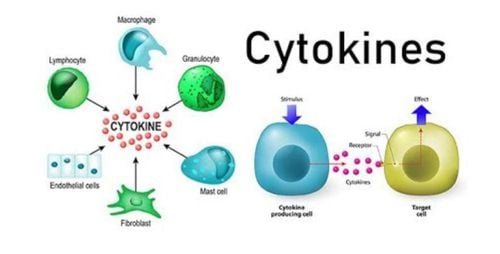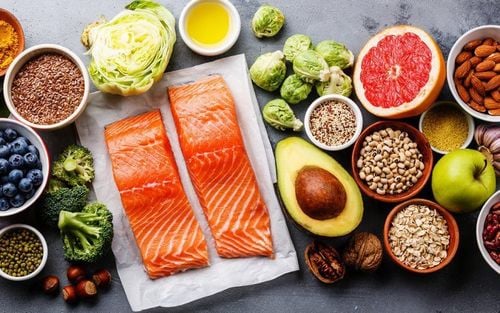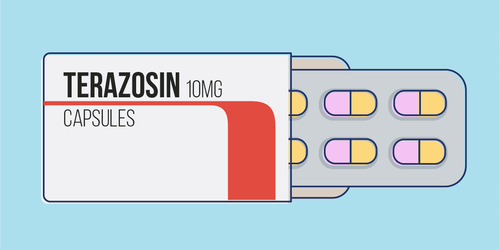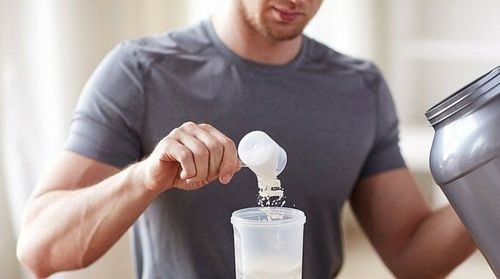This is an automatically translated article.
Typically, traditional weight loss programs focus on cutting body fat but with less muscle mass gains. Body recomposition is an approach to weight loss that emphasizes the importance of not only losing fat, but building muscle at the same time. In addition to cutting fat, using bodybuilding techniques can help you build strength and increase the number of calories you burn throughout the day.1. What is Body Reconstruction?
Body composition refers to the amount of fat and fat-free mass (muscle, bone, and water) your body contains. Body composition analysis provides a better understanding of health than other screening methods that take into account only weight and height, such as body mass index (BMI).That's because the percentage of body fat in relation to your muscle mass better reflects your overall health, not just your weight or BMI.
Therefore, body restructuring focuses on body composition rather than weight.
Unlike a standard diet, bodybuilding is a lifestyle in which fitness and nutrition techniques lead to healthy changes in your body's fat-to-muscle ratio.
Reconstruction means "to form something again or in a different way", hence the term "body restructuring."
Although body reconstruction has been used by athletes and weightlifters for quite some time, it has only recently gained traction with those who are simply trying To get fit and lose fat.
2. Body restructuring is more than just weight loss
Often, people use a scale to gauge their progress when trying to lose weight. If the number on the scale drops, most dieters make the inference successfully.However, the problem with using a scale as the only method of tracking your progress is that most scales do not distinguish between fat loss and muscle loss, which is an important factor in measuring health measurement.
Having too much body fat is linked to a wide range of health problems and can increase the risk of chronic diseases, such as diabetes, cancer and heart disease.
On the contrary, having a reasonable ratio of muscle mass to body fat can improve your health while reducing your risk of the above diseases.
If done properly, body contouring will change the structure of your body so that you have less fat and more muscle.
Interestingly, prioritizing bodybuilding techniques over other weight loss methods can lead to much slower weight loss, or no weight loss at all, due to concomitant muscle gain.
However, contrary to popular belief, your muscle-to-fat ratio is the best indicator of your overall health and fitness, not your body weight.
Additionally, increasing muscle mass will increase your resting metabolic rate (RMR), which means you'll burn more calories at rest. Instead of just aiming for weight loss, body restructuring focuses on reducing body fat while increasing muscle mass.

Tái cấu trúc cơ thể nhằm mục đích tăng cơ giảm mỡ
3. How does body remodeling work?
Since bodybuilding is more of a lifestyle than a diet, there is no specific procedure. Instead, people who want to gain muscle while burning fat must commit to changing their diet and exercise regimen in ways that allow the body to recover.Instead of tracking your weight on a scale, you should evaluate the results by taking body circumference measurements and measuring body fat through subcutaneous fat measurement methods.
4. Basic knowledge of body restructuring
With traditional weight loss methods, people can significantly cut calories and increase cardiovascular exercise to expend more energy.While this may help with weight loss, it will most likely reduce both fat and muscle mass. When following a body rebuilding routine, it's important to both preserve and build muscle and lose fat at the same time. It is necessary to adjust the exercise and diet regimen to achieve this goal.
While cardio exercise is important for weight loss and overall health, strength training is needed to change body composition. In addition, a high-protein diet will facilitate fat loss while supporting muscle growth. Body reconstruction methods can vary depending on your end goal. For example, a lean bodybuilder who wants to gain muscle and lose fat will have different diet and exercise needs than an overweight person who wants to lose fat while toning. The good news is that bodybuilding benefits everyone regardless of how much fat you want to lose or how much muscle you want to gain.
The key to effective body regeneration is finding a balance between diet and exercise. People who want to change their body composition should use muscle gain and fat loss methods. While anyone can use the principles of bodybuilding, the methods vary depending on your bodybuilding goals.
5. How to lose fat
From increasing your risk of many chronic diseases to damaging your mental health and body image, excess body fat can negatively impact health in many ways. To lose body fat, it is necessary to create a calorie deficit, which can be achieved by consuming fewer calories or expending more energy.However, cutting out a huge amount of calories through a very low calorie diet or engaging in hours of cardiovascular exercise does not necessarily preserve muscle mass.
To lose fat while maintaining or building shape, it's best to reduce your calorie intake moderately while incorporating muscle mass building exercises into your routine, such as strength training.
5.1. Nutrition and Fat Loss Diet quality is also important when it comes to fat loss. Consuming a high-protein diet has been shown to reduce fat while preserving lean body mass.
A study in 88 overweight adults found that a reduced-calorie diet containing 0.64 grams of protein per pound (1.4 g/kg) of body weight was more effective at maintaining mass. muscle mass and body fat loss compared with a diet providing 0.36 grams per pound (0.8 g/kg) of protein.
Studies have shown that higher protein intake is necessary for athletes trying to lose fat while maintaining muscle. A review of six studies found that athletes who lost the least amount of muscle mass while cutting calories consumed the most protein - 1.14–1.3 grams per pound (2.5–2.6) g/kg) body weight.
For this reason, increasing your protein intake to at least 0.64 grams per pound (1.4 g/kg) of body weight can improve your body composition.
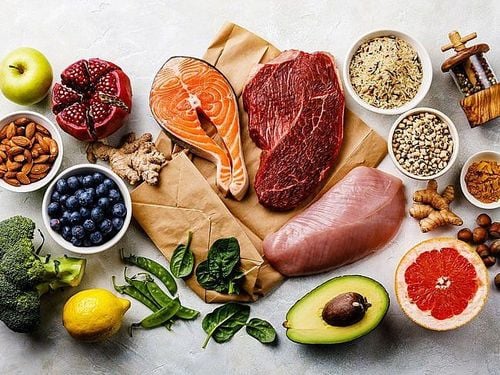
Dinh dưỡng đóng vai trò quan trọng trong quá trình tăng cơ giảm mỡ
Cut out processed foods: Eating a lot of processed foods, such as fast food, candy, packaged baked goods, and chips, is associated with excess body fat.
Reduce carbohydrate intake: Replacing carbohydrates (especially sugary carbs) with foods rich in protein, healthy fats, and fiber can increase feelings of fullness and decrease levels of insulin, a hormone that promotes fat storage .
Increase fiber intake: Eating more fiber-rich foods, such as vegetables and beans, can help reduce body fat, especially in the abdominal area.
Try interval training: Interval exercises that combine short, high-intensity bursts of energy followed by short recovery periods are more effective at reducing body fat than continuous exercises , moderate intensity.
Moderately reducing calories, cutting out processed foods, and increasing protein and fiber intake are the best ways to lose fat while maintaining muscle mass.
6. How to gain muscle
While losing fat is important, maintaining or gaining muscle is key to changing your body composition. Focusing solely on diet and ignoring exercise routines can lead to loss of muscle mass.It is important to combine a healthy diet that promotes lean muscle mass with an exercise routine to support muscle growth and maintenance.
6.1. The Importance of Protein When you are trying to build muscle, the right diet is very important. A healthy diet rich in whole foods, such as fresh produce, healthy fats, complex carbohydrates, and protein, is best for everyone, regardless of fitness goals.
People who are trying to improve their body composition may need to focus on increasing their protein intake, as studies have shown that a high protein diet is necessary to promote growth. muscle.
For example, a recent review concluded that 0.73–1 grams of protein per pound (1.6–2.2 g/kg) of body weight per day is best for maximizing muscle gain and strength.
Another review of 49 studies found that although participants consumed an average of 0.64 grams of protein per pound (1.4 g/kg) of body weight per day, adding 35 grams Daily protein supplements will lead to additional muscle mass gains.
The researchers concluded that the recommended daily intake (RDA) of 0.36 grams per pound (0.8 g/kg) “is unlikely to be sufficient for those with fitness goals greater strength and fat-free mass by resistance training”.
Furthermore, research from the International Society of Sports Nutrition shows that an even higher protein intake of 1.1–1.4 grams per pound (2.3–3.1 g/kg) per day can needed to maintain lean body mass in resistance-trained individuals following a low-calorie diet.
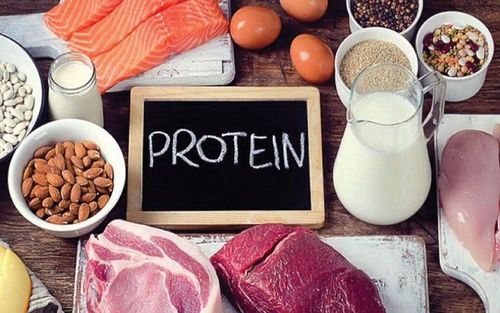
Chế độ ăn giàu protein thúc đẩy quá trình tăng cơ giảm mỡ diễn ra hiệu quả
You should evenly distribute protein sources throughout the day by consuming protein-rich foods such as eggs, poultry, dairy products and protein supplements every three to four hours.
6.2. The best exercises to gain muscle Along with a high-protein, whole-foods diet, it's important to incorporate endurance training into your routine. Strength training involves using resistance exercises to build strength and muscle mass. An example of strength training is lifting weights.
If your goal is to build muscle and lose fat, experts recommend at least two days of resistance training per week.
A review of 10 studies demonstrated that resistance training twice per week is more effective at maximizing muscle growth than training just once per week.
Incorporating strength training exercises like squats, bench presses, pushups and other muscle building exercises two to three days per week along with one to two days per week of interval training can be perfect combo.
Studies show that combining high-intensity interval training with endurance training leads to fat loss, as well as increases in muscle mass and strength.
To build muscle, increase your protein intake to at least 0.73 grams per pound (1.6 g/kg) of body weight per day and complete strength training exercises at least twice every week.
7. Supplementing with functional food protein to promote the body's restructuring process
Research proves that consuming a complete source of protein throughout the day is the best way to gain muscle. However, it is completely safe to use protein supplements to achieve the recommended amount of 0.73 grams/pound (1.6 g/kg) of body weight during resistance training.For example, consuming high-quality protein sources - including protein supplements - up to two hours after a workout stimulates muscle protein synthesis.
Protein sources that are high in essential amino acids (EAAs), especially the branched-chain amino acid leucine, are most effective at promoting muscle growth. Whey protein is a protein powder that is rich in EAAs and is a convenient post-workout protein source.
Plus, whey protein supplements have been shown to promote muscle growth when combined with resistance training programs (Source 24).
Supplements including whey, pea protein, casein and hemp powder are a practical way to increase your protein intake and can be especially helpful for those engaged in rigorous resistance training. However, you can completely get the recommended amount of this nutrient through meals and snacks.
Adding protein sources, such as eggs, chicken, fish, nuts, nut butters, beans and yogurt, to every meal and snack is the best way to meet your needs.
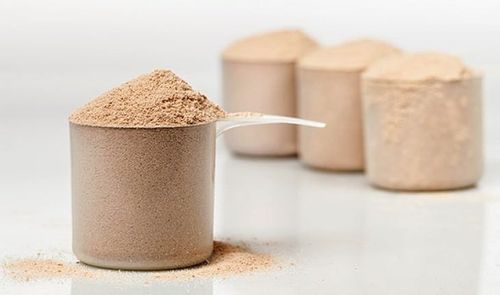
Whey protein là loại thực phẩm thường được sử dụng khi muốn tăng cơ giảm mỡ
In summary, body restructuring emphasizes the importance of building muscle while losing fat, which can reduce chronic disease risk and boost metabolism. Try increasing your protein intake to at least 0.73 grams per pound (1.6 g/kg) of body weight per day, and complete strength training at least twice per week. Everyone, from elite athletes to simple people looking for a healthy way to get in shape, can apply body restructuring methods.
Please dial HOTLINE for more information or register for an appointment HERE. Download MyVinmec app to make appointments faster and to manage your bookings easily.
Reference sources: healthline.com, verywellfit.com



